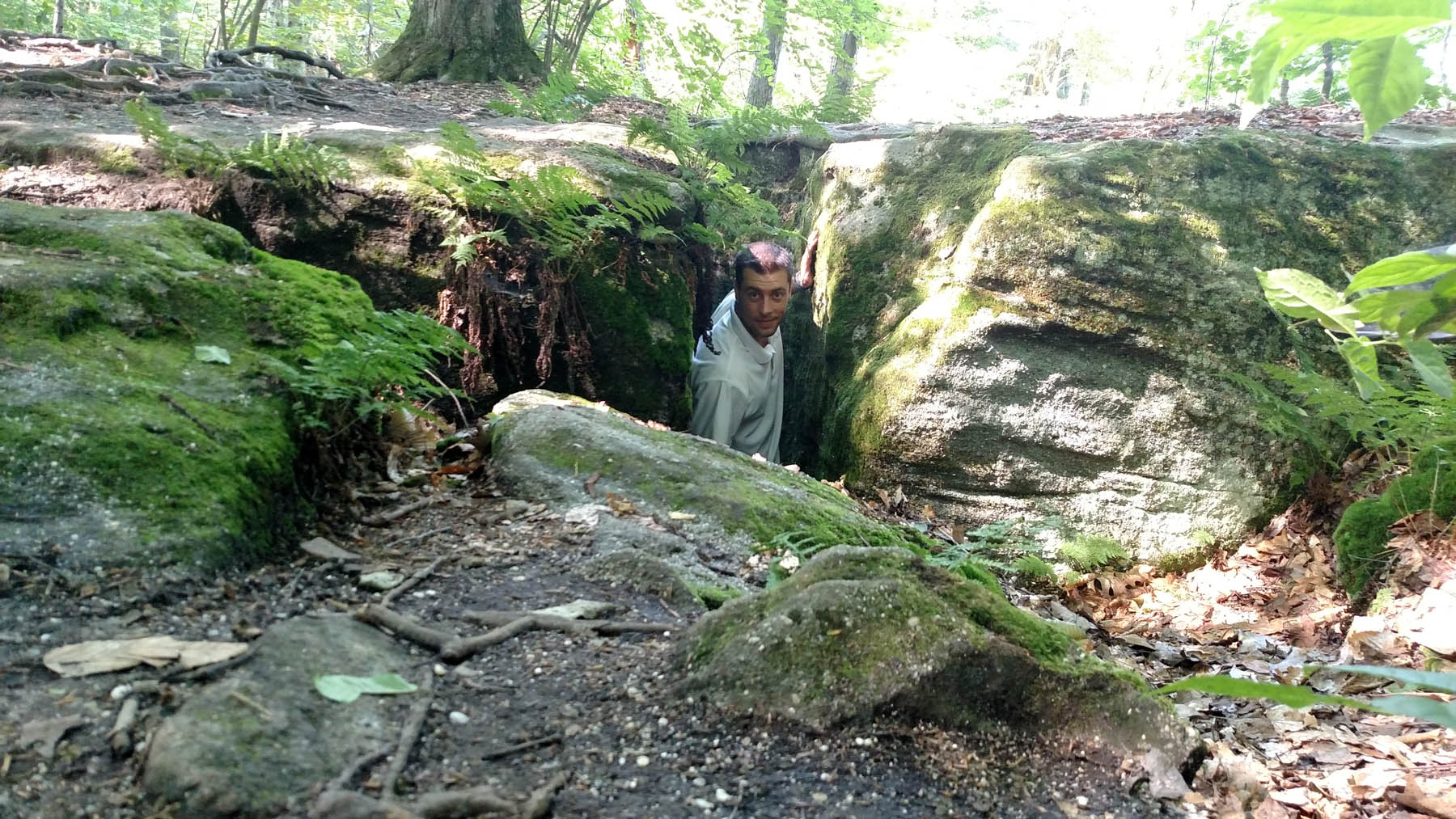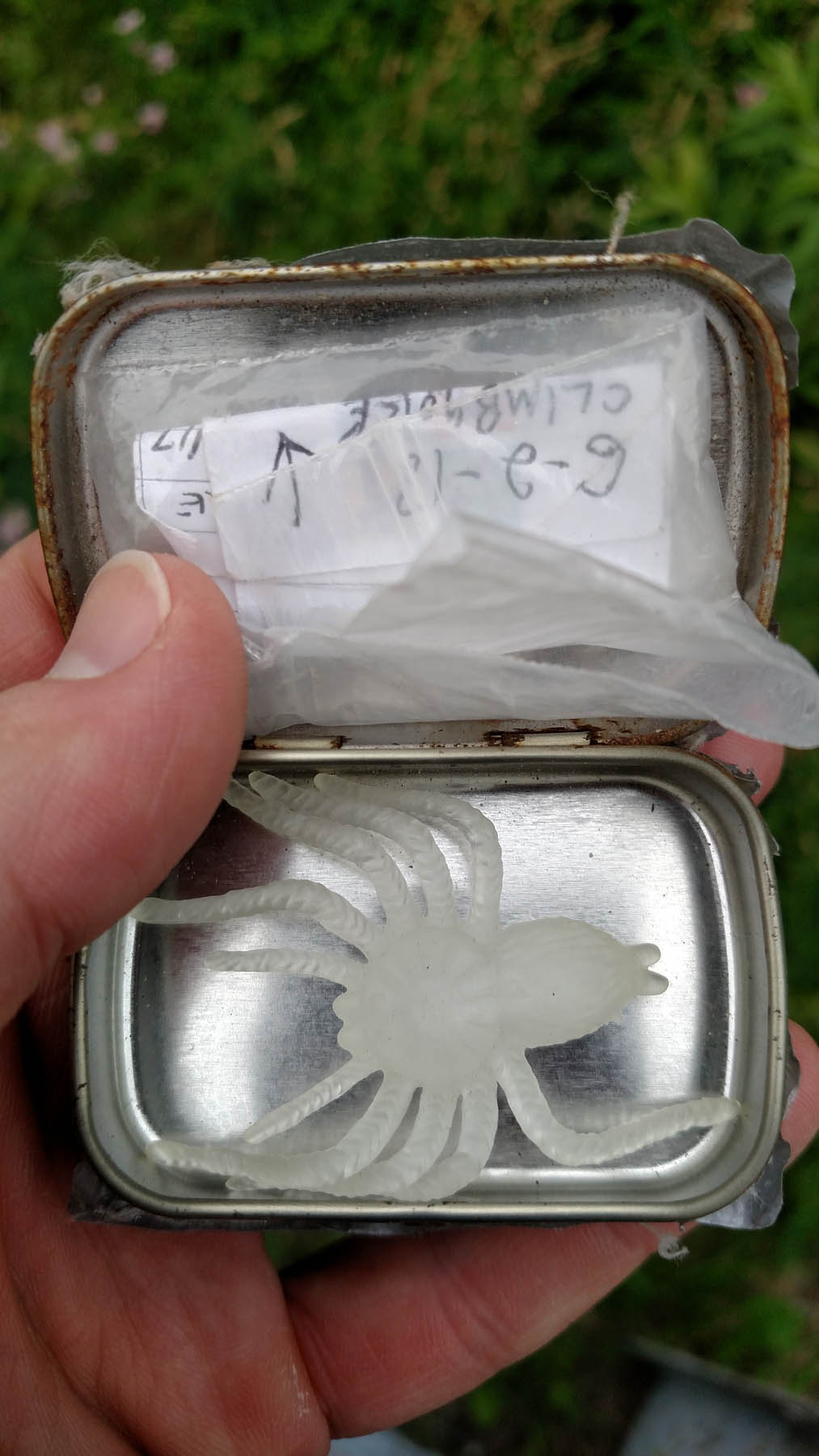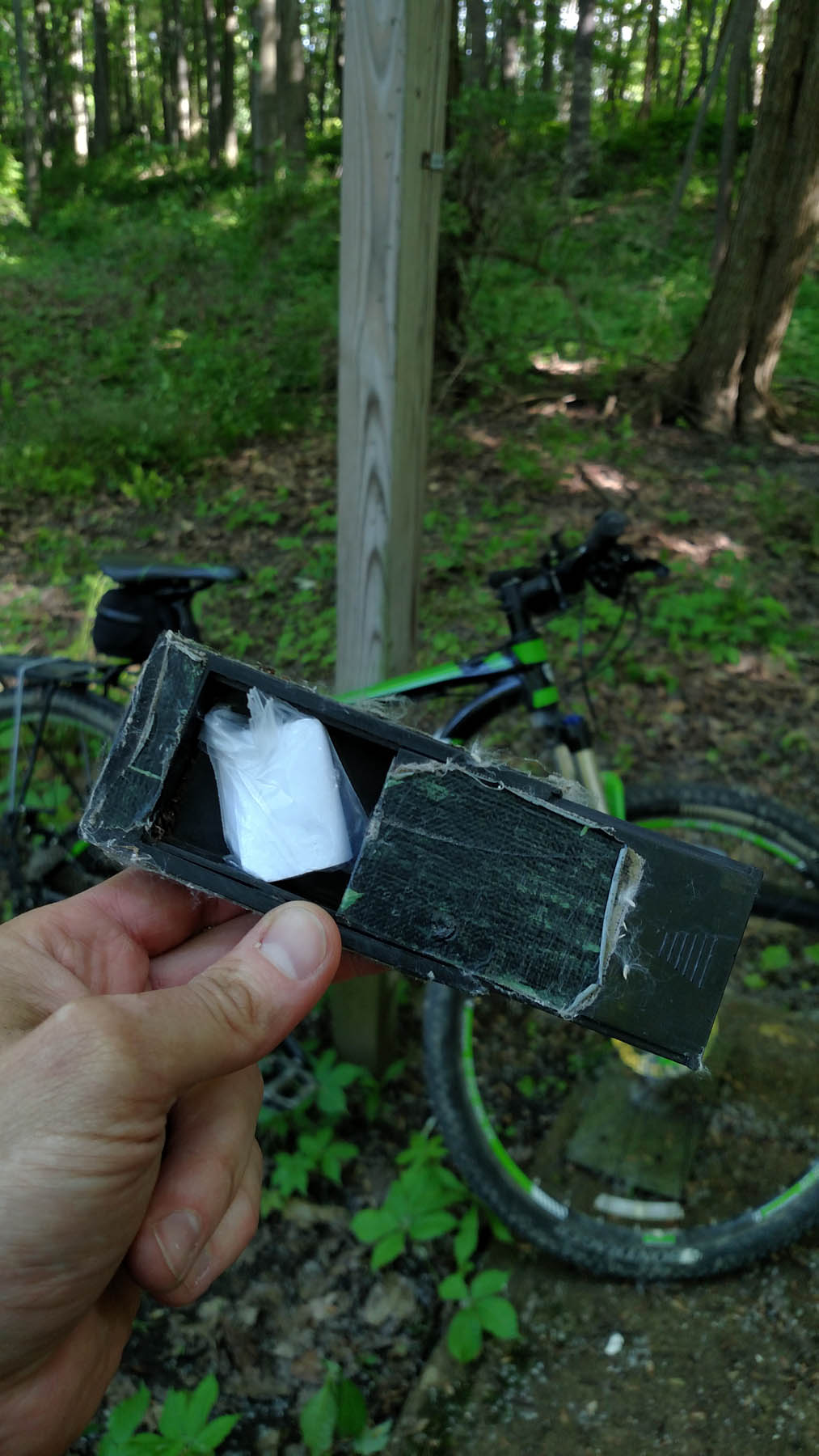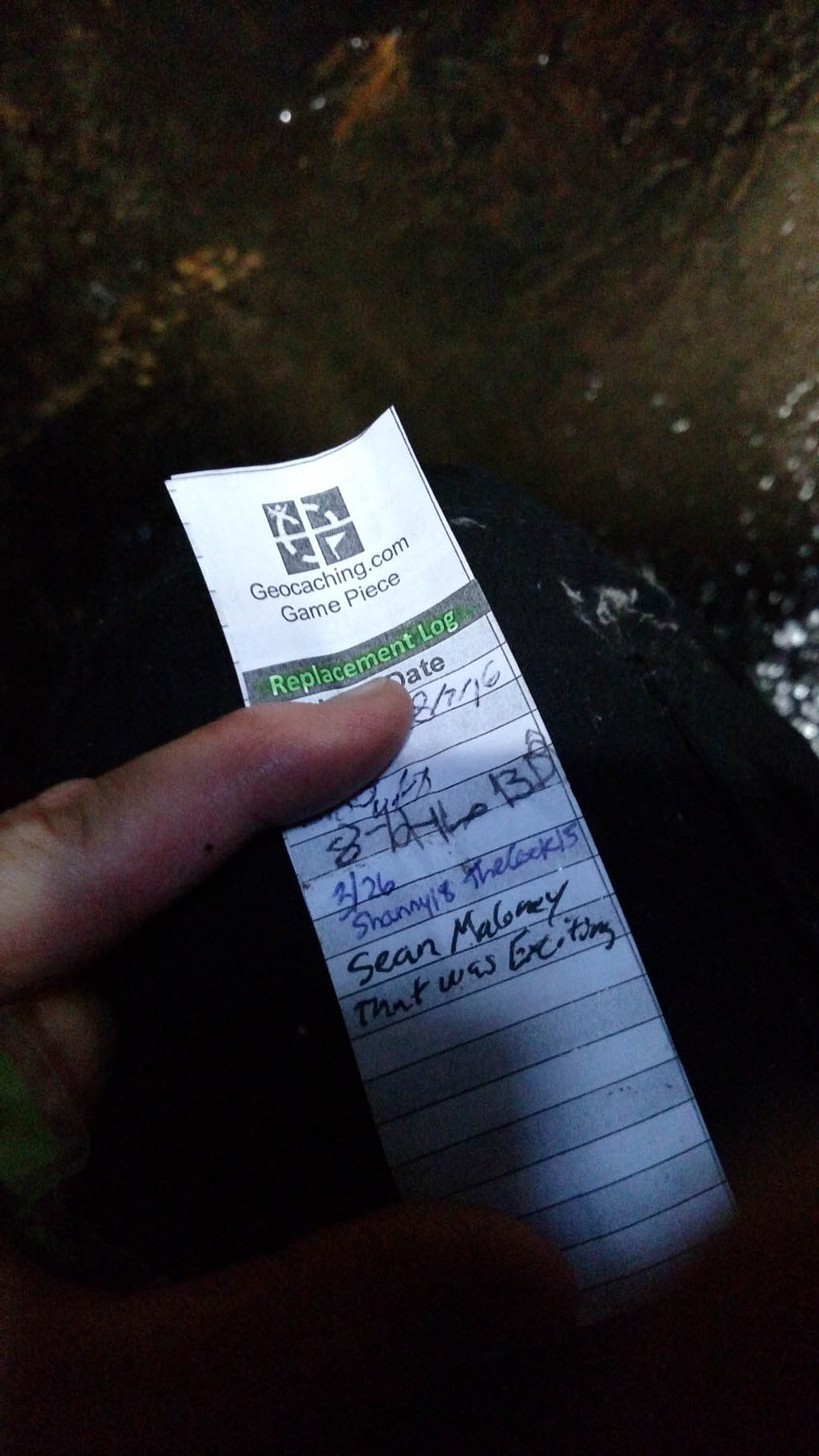geocaching
101
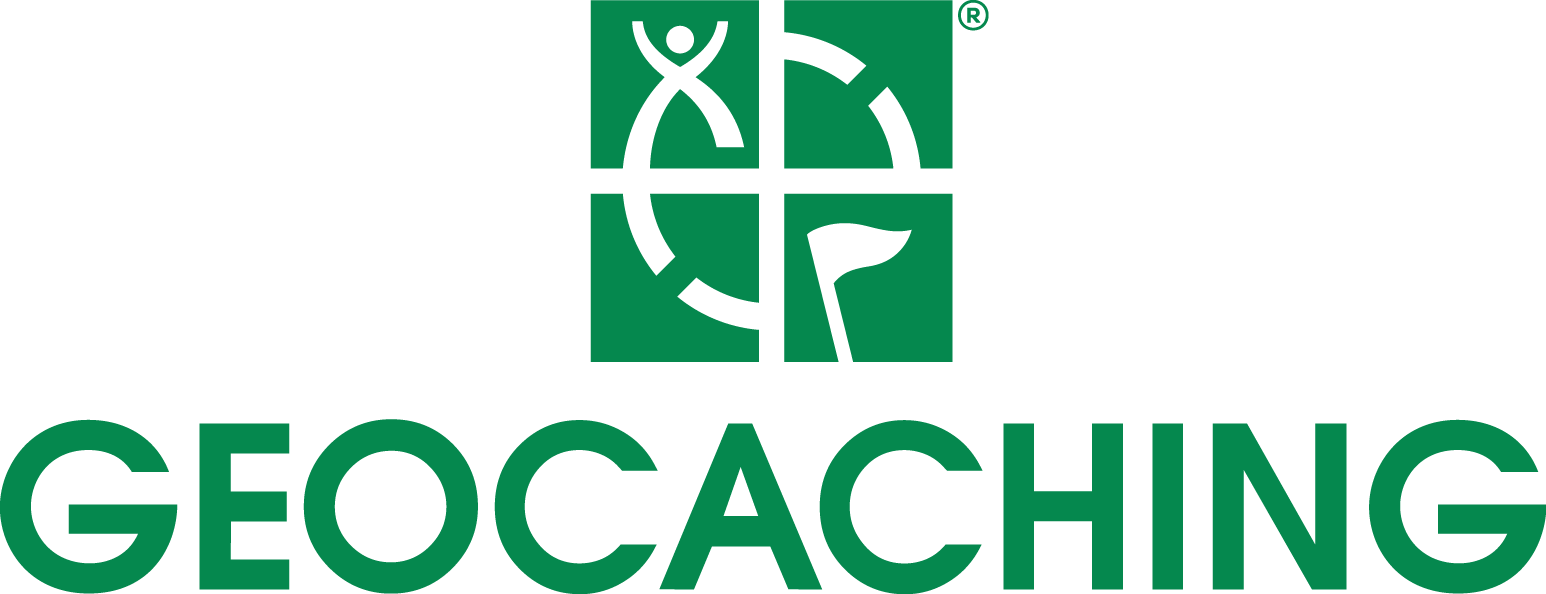
History of Geocaching
A Brief History
May 5, 2000, marks the first documented mention of a GPS-directed game of hide-and-seek. On that day, Oregonian Dave Ulmer posted an open e-mail on a USENET science newsgroup calling for an activity to celebrate the United States government’s taking down of satellite navigation’s Selective Availability (SA).
Until this point, the accuracy of GPS receivers was limited by these partially scrambled satellite signals (SA). Remember, GPS satellite navigation was originally developed by the US Department of Defense. In the political world of spies and espionage, limiting the accuracy of GPS to those without the proper credentials and clearance made sense. In the real world of commerce and safety, however, opening up the signals for the good of all appealed to common sense.
With the elimination of SA in that spring of 2000, what once was a tracking system capable of zeroing in from space to an area the size of a football field became a locating system capable of pinpointing a spot within 2 or 3 meters.
Within a week, the first website dedicated to the collection of coordinates relating to this new activity was secured by Mike Teague. One week later, James Coburn set up the first e-mail list dedicated to the discussion of what was originally called “geostashing.” That e-mail list, now on Yahoo!, is still used today. By the end of the month, the moniker had officially changed to “geocaching.”
On September 2, 2000, Jeremy Irish registered the domain name www.geocaching.com and assumed Teague’s cache database for the new site. Since then, numerous geocaching sites have popped up on the Web. A few of the more popular and stable sites originating from North America include navicache.com, todayscacher.com and brillig.com/geocaching/. These are where you’ll find most of the geocache coordinates.
Just 10 years after Dave Ulmer’s epiphanic email, more than 1 million Web-logged caches are hidden around the world. And the list keeps growing.
Look Up
Search
Find
Log it
Getting Started
Geocaching is simply navigating to the site of the cache by way of coordinates stored in your GPS receiver. The easiest ways to input geocache coordinates into your GPS unit are 1) Press the MARK button; or 2) Call up a previously stored waypoint, rename it, change its coordinates and save it to your GPS receiver’s memory. (This creates a new waypoint while retaining the old one.)
Different GPS receivers have varying ways of calling up previously stored waypoints or changing a waypoint’s coordinates. Check the owner’s manual of your GPS unit for specific instructions.
The easiest coordinate system to use when entering a geocache site or waypoint is the classic latitude and longitude. This can be expressed in Degrees/Minutes/Seconds (DMS) or Degree Decimal Minutes (DDM) . The latter has quickly become the standard in geocaching. However, another coordinate system, Universal Transverse Mercator (UTM) , offers many advantages. For example, it’s the easiest map-reading system. Developed by the military, UTM divides the map into square gridlines that are all 1,000 meters apart. This makes it very easy to see and judge distances. Most topo maps have the UTM gridlines printed on them. NOTE: UTM coordinates are comprised of 14 digits, 7 for what’s called the “Easting” and 7 for the “Northing.” If the first digit in either the Easting or Northing set is a zero, some GPS manufacturers’ software (e.g., Garmin) requires you to enter the zero, while others (e.g., Magellan) do not.
Many geocache coordinates are listed in both latitude/longitude (DDM) and UTM. However, if the coordinates are only listed in one form, your GPS receiver can convert DDM to UTM or vice versa. So you can navigate using whichever coordinate system you prefer. To convert from one system to another, simply: 1) go to the SET UP menu; and 2) in the UNITS submenu, change the Position Format to either UTM or LAT/LONG, depending on your preference. The next time you open or call up a waypoint, its coordinates will be expressed in whatever system you selected.
Here’s an example of how this works. Let’s say that you like to use a map with the UTM grid system, but the geocache you want to find only lists its coordinates in latitude/longitude.
- Set up your GPS receiver with the Lat/Long Position Format and record the geocache site’s coordinates, name it and save it.
- Reset your GPS unit with the UTM Position Format. When you call up your target geocache coordinates again, they’ll be expressed in UTM so you’ll be able to plot the location on your map.
- Once you’re in the general vicinity of the cache and are ready to begin your “on foot” search, call up the cache waypoint and press the GO TO button to help you fine-tune your search.
The number one rule of geocaching is to follow the Golden Rule: Treat fellow geocachers the way you want to be treated. Following geocaching etiquette ensures its survival.
- A geocache should be placed in a way so it’s unnoticeable to passers-by yet can be accessed without harming terrain or vegetation.
- A geocache box or container should be camouflaged so it fits in with the surroundings and doesn’t accidentally alarm others.
- Don’t expose the hiding spot to others. When you find a geocache, quickly move it away from the site before examining it.
- It’s good form to sign the register to let the geocache owner and fellow geocachers know of your visit. Afterwards, go online to geocaching.com to record your visit there as well.
- Always exchange trinkets (also called “trade items”) with those of equal or greater value. Leave the cache better than you found it.
- Travel bugs are different than trade items. Sometimes called “hitchhikers,” these are often intended to travel the world. They are OK to take as long as you promise to put it in another geocache. Be sure to log the travel bug number online so its owner can trace its travels.
- Once you’re done with the geocache, return it exactly where you found it. Resist the temptation to find a better or more complicated spot.
A time-honored geocaching principle is CITO, or “Cache In, Trash Out.” This refers to geocachers who collect and dispose of litter found along the way. Always strive to leave the environment as pristine as, or better than, you found it. See www.cacheintrashout.org for details.
What to Bring
#1 A GPS receiver, topo maps and compass may also be used and could be useful for some areas that reception is limited.
Flashlight: Don’t underestimate the time it may take you to find the cache. Be prepared in case dusk falls sooner than you expected.
Water bottle: As with any outdoor activity, staying hydrated keeps your muscles happy and your mind sharp. Take along an ample supply.
Cell phone: Geocaching solo can be a welcome respite from the real world. But if you go alone, leave your “flight plan” with a loved one and take along a cell phone.
First-aid kit: Get familiar with your terrain before you go. Your pack should include the basics as well as items specific for the environment.
Insect repellent and sunscreen: Apply before you go and take them along to reapply along the way. You may want to consider bug-repelling and/or SPF-rated clothing.
Extra batteries: Carry spares for each electronic device you take along, such as your GPS unit and camera.
Camera: Some geocaches contain an inexpensive disposable camera. Each finder of the cache snaps a photo to record his or her success. The geocache owner, notified when the last shot is taken, posts the images online. Why not extend the spirit of geocaching and leave behind a fresh camera if the cache’s camera is full?
Outerwear: Always a good idea for unexpected rain, wind and bugs.
Notebook and 2 pens: Keep a running log of all your caches. Record waypoints and coordinates for future reference. Jot down your impressions of the landscape. Take along a spare pen or pencil not just for yourself but also for the cache in case its pen has run dry.
Cache treasures: Cache finders will want to leave behind a little token (as well as take one as a souvenir). Think small, lightweight, environmentally (and culturally) friendly, inexpensive and nondegradable ideas: toy cars, tiny plastic action figures or marbles are good examples.
Pocket change: Once you have a GPS unit, geocaching is a low-cost activity. Take along a few dollars though, “just in case.”
Other Important Parts Of The Game
Size classifications
Geocaching.com has its own geocache size classification scale; geocachers must pick a size from one of the options before submitting a geocache listing through the website. The sizes are:
- Micro/Extra Small: Less than 100 millilitres in volume. These are usually the size of/are a film canister.
- Small: Large enough to hold a logbook and small items; more than 100 millilitres but less than 1 litre in volume. These are usually the size of/are a sandwich box.
- Regular/Medium: Between 1 and 20 litres in volume. These are usually the size of/are a shoebox, and many of these can be ammo cans.
- Large: More than 20 litres in volume. These can be buckets, bins or old railroad freight cars.
- Other: A size that doesn’t fit into these categories, or where the cache owner doesn’t wish to provide a size clue.
- Virtual: For virtual cache types, as there is no physical container
SWAG. Small toys, keychains, and other treasures found in the cache – that’s geocaching SWAG – or Stuff We All Get. SWAG is often something homemade, or represents a geocacher, their interests, or where they’re from! Geocachers trade swag by replacing items in the geocache with something of equal or greater value.
Real Treasure gift cards, lottery tickets and even real ca$h!! This is the That Was Exciting twist on the game. By finding my caches or by finding caches I’ve found you might have a chance at winning some valuable prizes. Following along on Facebook, Instagram, Youtube the website and signing up for treasure notifications you will give you the clues you need to solve the next treasure hunt.
Another feature of the game are Travel Bugs and Trackables.
These are objects attached to a tracking tag that looks like a military dog tag. Technically the dog tag is the “travel bug” and the attached object is called the “hitchhiker” but everyone calls the combination a Travel Bug. The tracking tags come from Geocaching.com. You add your own traveler. The original concept was, a geocacher picks up a Bug from one geocache (usually just called a ‘cache’ by geocachers) and leaves it in another(it’s how they travel). Travel Bugs have their own page on the website where owners can define a mission for the Bug. For example, a bug might have the mission to go to the moon, but in the mean time to visit every state in the continental U.S. according to a specific pattern. People who move a bug go to the bug’s page to record the move using the tracking number on the dog tag. If it’s in the bug’s mission, and the owner is lucky, their bug can travel all over the world. They’re notified of every place it stops and can view any pictures the cacher who moved it might have added.
A while ago the ability was added to “discover” Travel Bugs. Now, you can record the tracking number while at the cache the bug is in (picture with cell phone is common) then on its page log that you discovered it.
Either way, trackables let you experience an epic journey, one story and one geocache at a time. Each log from your trackable is a page in a digital diary. You can see exotic locations, read entries of your trackable’s travels, and connect with the geocachers who carry your trackable from geocache to geocache.
There are a few kinds of events.
An Event Cache is a gathering organized and attended by geocachers.
Cache-In Trash-Out (CITO) Events are coordinated activities of trash pickup and other maintenance tasks (such as constructing footpaths, planting trees and removing invasive species) to improve the environment. CITO is an ongoing environmental initiative created by Groundspeak Inc. related to geocaching which encourages geocachers to clean up parks and other areas. This is done in two ways: specific events, traditionally around the time of Earth Day each year, in which groups go around picking up and maintaining the landscape while finding geocaches.
A Mega Event is defined by attendance of over 500 people. Mega Events are typically annual events, usually attracting geocachers from all over the world.
A Giga Event is an event with an attendance of over 5000 people, also attracting geocachers from worldwide.
Finally, a GPS Adventures Maze Exhibit is an exhibit at various museums and science centers in which participants in the maze learn about geocaching. These “events” have their own cache type on Geocaching.com and include many non-geocachers.
Geodashing[edit]
Geodashing is an outdoor sport in which teams of players use GPS receivers to find and visit randomly selected “dashpoints” (also called “waypoints”) around the world and report what they find. The objective is to visit as many dashpoints as possible.
Unlike geocaching, nothing is to be left at the dashpoints; the sole objective is to visit them within the time limit.
The first game, organized by gpsgames.org, ran for two months (June and July 2001); each subsequent game has run for one month. Players are often encouraged to take pictures at the dashpoints and upload them to the site.
Stratocaching[edit]
Geocaching from space is a combination of flight to near space, the geocaching game, and a unique science experiment. The first Stratocaching event was held on 16 November 2013 in Prague and was successful. Ten caches and two “radioseeds” went up to 30 km (19 mi) into the stratosphere on a gondola called Dropion module carried by a high-altitude balloon. The caches and seeds then fell to earth for people to find
Now That You Know What You Are Doing Check These Out.
That Was Exciting Caches
My List Of Favorite Finds
Geocaching.com
Here is a link to Geocaching .com. Find out more about their site and some of the top rated caches they have in your area.
Exclusive
That Was Exciting
Caches

Hunting For Real Treasure
It’s fun to geocache, metal detect and go on scavenger hunts but……its’ even more fun when you know there are real prizes out there.
- Gift Cards.
- Lottery Tickets.
- Ca$h and More!
Want to build, hide, or sponsor a cache?
Let me know what kind of ideas you have and how we can work together.
Other Treasure Hunting Adventures
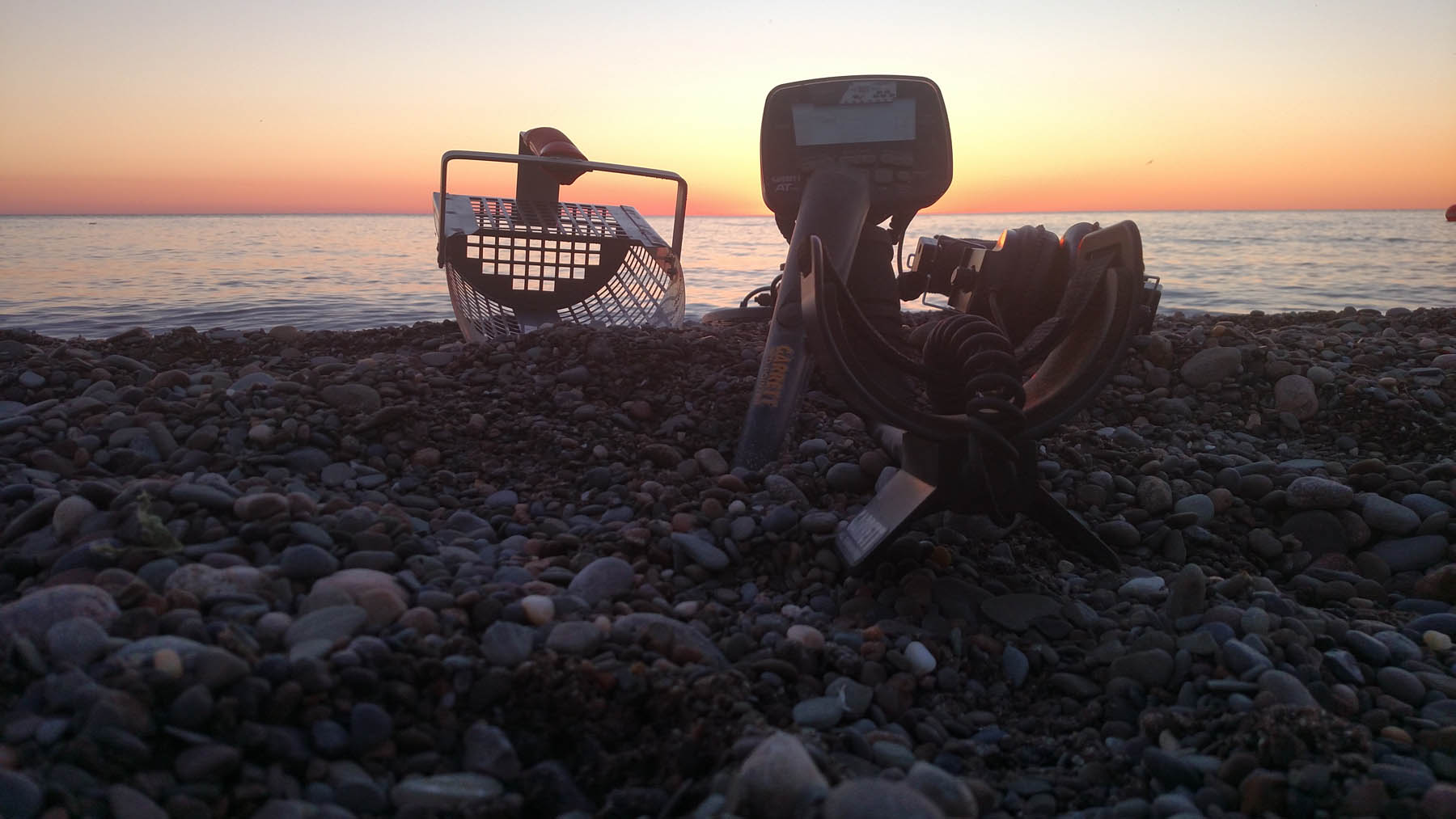
Metal Detecting
